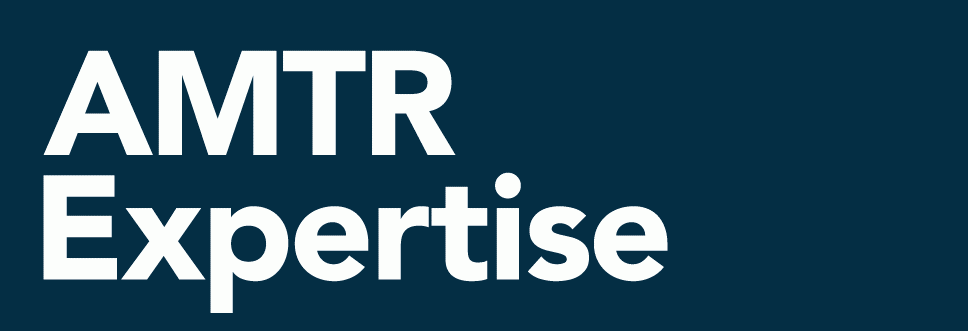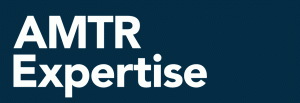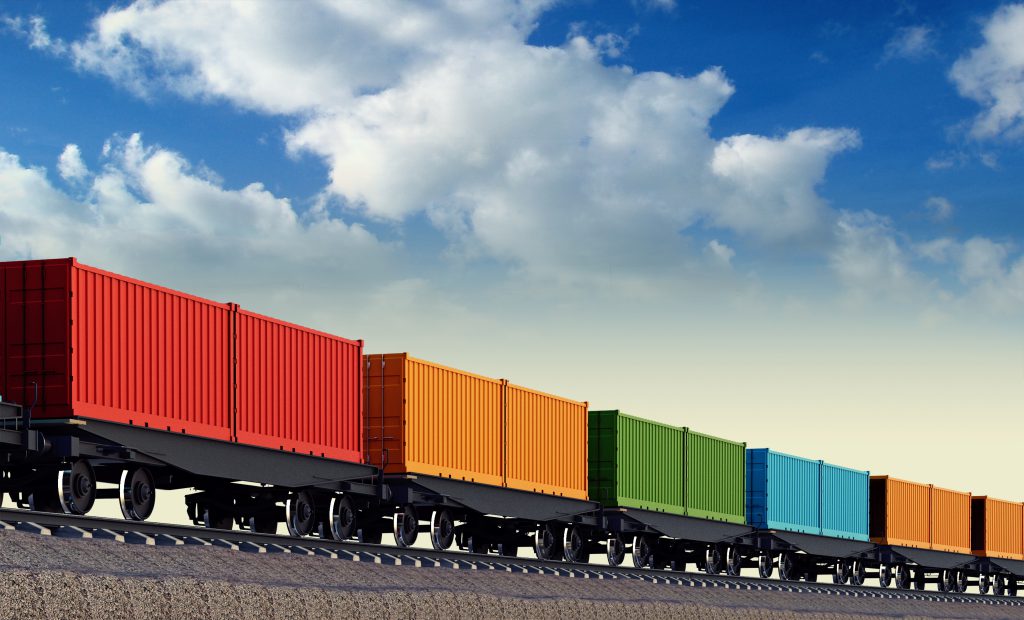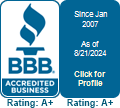AMTR is in full support of The Transportation & Logistic Council (TLC) and the National Shippers Strategic Transportation Council (NASSTRAC) efforts to address the unreasonable bill of lading changes as set forth in the Supplement 2 to the National Motor Freight Classification (NMFC) version NMF 100-AP, that became effective on August 13th. Included in this supplement were silent but drastic changes to the Uniform Straight Bill of Lading, Straight Bill of Lading–Short Form and the NMFC rules in Item 360 regarding bills of lading. These changes were made without notice and without a comment period for shippers. Please find below the most significant changes and the impact that shippers will incur:
1. NMF 100 Item 360-B Uniform Straight Bill of Lading Terms and Conditions Sec. 1 (b)
Effective in Sup 2: “…The burden to prove carrier negligence is on the shipper.”
2. NMF 100 Item 360-B Uniform Straight Bill of Lading Terms and Conditions Sec. 1 (b)
Effective in Sup 2: “No carrier shall be liable for any loss or damage or for any delay caused by an Act of God, the public enemy, the authority of law, the act or default of the shipper, riots or strikes, or any related causes.”
Another new addition is the phrase “or any related causes.” This is extremely vague in its meaning and application. Ambiguity in this sense could be harmful to shippers when trying to prove the carrier’s negligence. It is hard to prove a case on a clause that is vague.
3. NMF 100 Item 360-B Uniform Straight Bill of Lading Terms and Conditions Sec. 2
Effective in Sup. 2: “…carrier is not bound to transport a shipment by a particular schedule or in time for a particular market, but will transport the shipment in the regular course of its providing transportation services.”
4. NMF 100 Item 360-B Uniform Straight Bill of Lading Terms and Conditions Sec. 3 (b)
Effective in Sup. 2: “Claims for loss must be filed with the carrier not more than nine (9) months from the date of the bill of lading.”
WHO WILL THIS AFFECT?
Virtually all major motor carriers in the US—less-than-truckload and truckload—are participants to the NMFC, and freight charges based on rates dependent on classifications provided in the NMFC are required to use the Uniform Straight Bill of lading. Those who do not use the classification but are a participating carrier are also subject to such rules [NMF 100 Item 362-B]. Therefore, the impact of the changes will impact most shippers and shipments [see NMF 100 Item 360-B Sec. 1 (a) and (b)]. If shippers so choose to use their own bill of lading, per NMF 100 Item 360-B Sec. 1(h), they are still bound to all of the provisions and conditions of the Uniform Straight Bill of Lading.
SINCE THE SUPPLEMENT BECAME EFFECTIVE:
The Transportation & Logistics Council (TLC) filed a petition with the Surface Transportation Board (STB) for suspension and investigation of the Supplement on July 29th. Find that full document here: http://www.tlcouncil.org/sites/default/files/tlc_petition_7-29-16_docket_35008_0.pdf. The National Shippers Strategic Transportation Council (NASSTRAC) then filed a petition in support of TLC dated August 1st. Find the full document here: http://www.tlcouncil.org/sites/default/files/nasstrac_8-1-16_dkt_35008_0.pdf. The STB released their decision on August 12th. The STB denied the request and stated parties should file supplemental pleadings by September 12th. There is an open comments period and shippers are urged to comment in support of Docket Number IMA 35008. You can send your comments to:
Chief, Section of Administration
Office of Proceedings
Surface Transportation Board
395 E. Street, SW
Washington, DC 20423
On July 27, 2016, the Surface Transportation Board (STB) issued a decision on the petition to revise competitive switching rules and opened a comment period through September 26, 2016. The board has also invited stakeholders to request ex parte meetings with board members to be conducted between October 25 and November 14.
Currently, reciprocal switching can occur as a voluntary arrangement between carriers or may be ordered by the Board. However, the current regulations have proven to be so restrictive that few cases have even been brought before the board. If you are a captive shipper, now is the time to act. The Board has waived the prohibition against ex parte meetings out of concern for all affected parties and seeks input before making the final determination regarding the issue.
In May, the Commercial Vehicle Safety Alliance (CVSA) completed its annual unannounced brake check day that lead to removing 12.4% of trucks investigated out of service. This is all part of a North America program called Operation Airbrake, which is dedicated to brake system safety through carrier compliance and awareness.
The random inspection consisted of 6,128 vehicles throughout 31 U.S. states and Canadian territories and provinces. Beyond the 12.4% having brake violations, 13.9% were removed from service for other violations found during these inspections. Education, awareness, compliance of equipment and other safety regulations are necessary for safety’s sake. Don’t get caught having to pay a much higher rate to another carrier because your regular carrier has been put out of service due to violations.
Rail vs. Private Cars
The Official Railway Equipment Register, published quarterly, provides all data from the UMLER system in tariff format as mandated by the government. The two main sections contain the car specifications of railroad owned reporting marks in the front and privately owned reporting marks in the back. The reporting marks should be able to tell you who owns the car and therefore what rate to pay, right? Not necessarily. Fleet management has become more complex over the years due to railroads leasing from private companies and private companies leasing railroad-owned equipment. So when your pricing contains a rail and a private car rate, choosing correctly can get tricky. Owners of equipment should update any lease arrangement through Railinc, which is one way to verify the status of the car and is also what the railroads use to create your invoice. There are also different types of leases which may or may not account for car hire and other factors. Sound complicated? If you lease equipment regularly, you might benefit from having your freight charges verified by an outside source. Let AMTR show you where unnecessary dollars might be slipping out the door.
Contract Rates vs. Quotes
A common carrier’s rules tariff usually specifies the hierarchy of rate applications when it comes to tariff, contract and quote pricing. However, this has not always been–and is still not always–the standard. So for shippers, this should beg the question of which one should apply.
Customer-specific pricing will come in the form of tariff pricing or contract pricing. For a better understanding of the difference between the two, please visit amtr.com/glossary and review contracts and truck tariffs terms. Customer-specific pricing can be customized to fit the shipper’s and carrier’s needs. Larger discounts may be given for specific locations and accessorial exceptions may be granted for services the carrier may perform on a regular basis.
The common practice for carriers currently is to have the quoted amount supersede any customer-specific pricing. Most commonly, quotes for special services such as expedited, guaranteed delivery and shipments requiring other special services will take precedence. You will have to pay for the service level you require. Once you look further into a carrier’s rules tariff, however, you will find that common quotes obtained online or through customer service via telephone are often just estimates of charges, superseded by client-specific pricing.
Many companies pay thousands of dollars more than they should when quotes are applied instead of customer-specific pricing. At AMTR, our expert auditors will save you money on your freight charges by discerning between the application rules of quotes and client-specific pricing.
In business circles, the conversations about “data” seem to be all the rage these days. Whether the topic is big data, data analytics or data mining, it is easy to get the impression that more data is better. With the right software tools, meaning can be derived from any data easily and quickly. Voila! Undoubtedly, information technology has allowed great advances in data collection and analysis, but to use some ideas from the knowledge management discipline: data without relevance or purpose is not information, and information without context and meaning is not knowledge. So where do context and meaning come from, then, to allow knowledge? It is simple–they come from humans. Data without human knowledge to make sense of it is just data. Even powerful data analysis tools and algorithms need human care and feeding in addition to thoughtful interpretation of results.
At AMTR, every audit begins with an examination of client shipping-related data. This data comes from many different sources, including client TMS systems, payment files and invoices. At first blush, the data itself often looks good, and in many cases, it has even made it through the “tolerances” set by precursor systems. However, when our auditors further examine the data using their knowledge of transportation laws, client shipping patterns, common information system errors and past auditing experiences, the data “reveals” knowledge that would not have been obvious to the casual observer, hence the “essence” of our Smart Auditing® approach. David McCandless, a self-labeled data journalist and information designer, has been quoted as asking, “Data is the new oil? No: data is the new soil.” At AMTR, we agree with this sentiment as we know data alone is not the new “holy grail,” yet it allows fertile ground for those who can understand and exploit its potential using human interpretation and application.
In order to enhance Food Safety for the millions who suffer from peanut or tree nut allergies, Union Pacific has taken action. Given that individuals afflicted with peanut and/or tree nut allergies can experience significant health problems from just being exposed to residue from these products, Union Pacific will no longer allow shipments of bulk peanut and tree nut commodities, including nut shells, in Union Pacific system covered hopper cars. Effective August 1, 2016, Union Pacific is modifying its general rules tariff and provisions within the appropriate pricing tariffs to reflect this new policy. Shippers are reminded that this does NOT impact access to shipping such products in private cars.
Infrastructure Repair an Important Issue
It has been a pothole-filled, rough ride on the road to transportation infrastructure repair in the U.S. It took over 10 years and 36 short-term extensions to get a long-term transportation bill passed. With the FAST Act (Fixing America’s Surface Transportation Act), which was signed into law on December 4, 2015 by President Obama, the idea was to provide the funds needed in order to start repairing the country’s crumbling roads and bridges. This Act also provided changes and reforms to many federal transportation programs, allowing processes to be more streamlined and providing new tools and programs for transportation projects.
Looking to the future, our infrastructure issues will soon be in the hands of a new President. The good news is that both front-runners, Trump and Clinton, see the significance in supporting these important repairs and changes. Both have vowed to seek improvements in our current crumbling status. According to Logistics Management, Clinton is quoted as saying, “When it comes to the physical infrastructure, we have to take care of what we already have, upgrade it, modernize it.” Furthermore, Trump is cited as saying, “Rebuild the country’s infrastructure; nobody can do that like me, believe me…We have to rebuild our infrastructure: our bridges, our roadways, our airports.”
Any transportation infrastructure issue that drives up the cost of transporting goods is of great concern to many. The American economy simply cannot move forward if our trucks, trains and planes cannot.
Got a rail car that needs some work? Is your fleet of tank cars up for the DOT-mandated safety retrofit? All railcar owners have to send cars to the shop at some point and moving empty equipment around is just not profitable. With a little planning, however, you might be able to save your company a little money. Carriers often have a provision that allows empty car moves to alternate locations – such as a repair shop, instead of returning to the point of origin – free of charge under certain circumstances. Some carriers also have provisions to allow movement of equipment out of a shop and back into service without charge. These rules can be tricky, however, and differ from carrier to carrier. Let AMTR review your empty car freight bills to make sure you are taking advantage of these special rules to save you money.
Do It Right, Save Money
It should be no surprise to any shipper that misclassification of articles is a leading cause of overcharge claims in LTL shipments. In the NFMC there are 18 applicable classes ranging from 50 to 500. The first challenge is to find a description that best fits the article being shipped – an activity that sounds simple however is very complex. Some of the items listed are very specific and some are very broad. Secondly, after an appropriate description is identified, the corresponding NMFC 100 item number must be further investigated. NMFC item number descriptions detail more specific qualifiers and disqualifiers. If, after comparison, these criteria remain accurate for the article being shipped, then an applicable sub may have to be determined as well. Subs can be determined by using many different qualifiers such as: density, method of shipping (crate, boxes, carboys, etc.), Zone A hazard, hazardous class and/or packaging group, release value, combustible/flammable, knocked down or set up, palletized or loose, weight breaks, or even by material type (lead, alloy, steel). Sometimes there are multiple steps for determining subs, such as first determining the packaging and then density. Bottom line: classifying articles can get very complex, very quickly.
Of special note is the frequent confusion on classifying hazardous materials. Bills of lading often list a primary product with the hazardous ingredient identified in parentheses. The product being shipped should be what is classified, not the hazardous ingredient listed in the parentheses. Imagine shipping a cake. Let’s say the eggs, a common ingredient in a cake, are hazardous. In this case, the bill of lading might read “CAKE (eggs) hazard class 8 packing group III.” When determining the class, CAKE-not eggs-should get the focus.
AMTR’s expert auditors spend years learning about the NMF classifications and apply this knowledge in every truck audit. Classifications can be hard, but AMTR makes it “easy as cake” for our clients!












